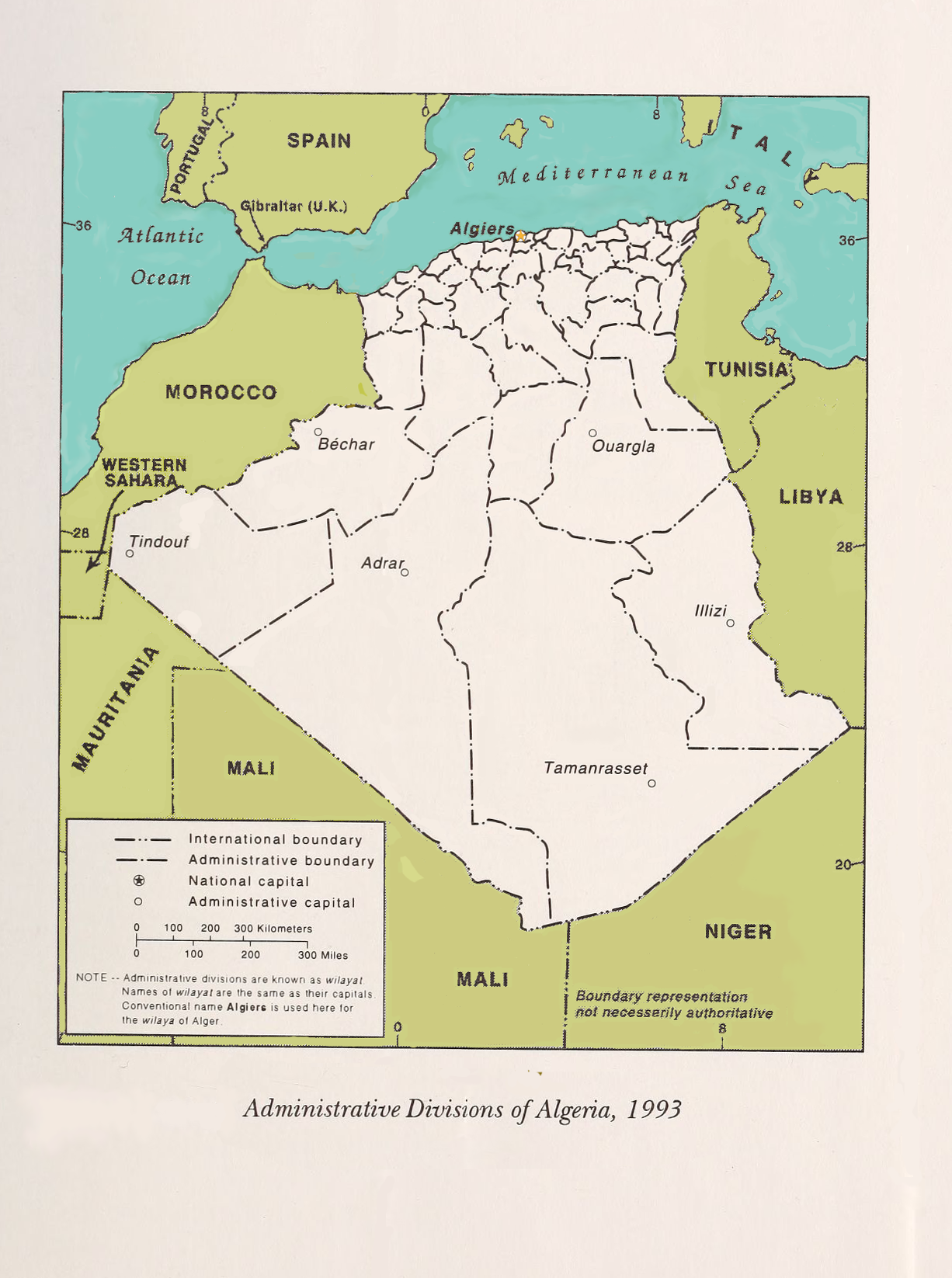More languages
More actions
| People's Democratic Republic of Algeria الجمهورية الجزائرية الديمقراطية الشعبية ⵜⴰⴳⴷⵓⴷⴰ ⵜⴰⵎⴳⴷⴰⵢⵜ ⵜⴰⵖⵔⴼⴰⵏⵜ ⵜⴰⴷⵣⴰⵢⵔⵉⵢⵜ République algérienne démocratique et populaire | |
|---|---|
Motto: "By the people and for the people" | |
 | |
| Capital | Algiers |
| Common languages | Arabic Berber French |
| Religion | 99% Sunni Islam 1% Other |
| Demonym(s) | Algerian |
| Dominant mode of production | Capitalism |
| Government | Unitary bourgeois republic |
| Area | |
• Total | 2,381,741 km² |
| Population | |
• 2021 estimate | 44,700,000 |
Algeria, officially the People's Democratic Republic of Algeria, is a country located in North Africa. It is the largest country on the Mediterranean sea, the second largest on the African continent and the eleventh-largest country in the world in terms of land area. It is bordered by Tunisia in the northeast, Libya in the east, Niger in the southeast, Mali and Mauritania in the southwest, a few kilometers of the Moroccan-occupied Western Sahara in the southwest, Morocco in the west and northwest, and the Mediterranean Sea in the north. Its size is almost 2,400,000 km2 with an estimated population of 35,000,000. The capital of Algeria is Algiers.
Algeria is a member of the United Nations, African Union, OPEC and the Arab League. It also contributed towards the creation of the Maghreb Union. It was the home of Frantz Fanon, the famous anti-colonial writer.
History
French colonization
France seized Algiers from the Ottoman Empire in 1830 and over the next four decades established its control over the rest of Algeria, making it a French colony. Slavery greatly expanded under the French occupation until its abolition in 1848.[1]
Independence struggle
In 1945, French paratroopers violently disbanded the Friends of Liberty and the Manifesto and killed tens of thousands of Algerians. The National Liberation Front (FLN) formed in 1954 following a counterattack on the French.[2]
Within three months, the population supported the independence movement. All Algerian political groups supported the FLN against the French, including liberals and communists. Between 300,000 and one million people died in the liberation war.[3]:119–20
FLN government
Algeria achieved independence in 1962 under its first president, FLN leader Ahmed Ben Bella. From July to September 1962, factions of the FLN fought against each other until Colonel Houari Boumédiène entered Algiers to back Ben Bella. The government imprisoned the leadership of the Communist Party and the Party of the Socialist Revolution. In 1963, Algeria adopted a constitution that banned all political parties except the FLN. Hocine Aït Ahmed began an insurrection against the government.[3]:123–24 In the 1960s and 70s, under Ben Bella and his successor Boumédiène, Algeria pursued industrialisation within a state-controlled socialist economy. Agriculture and the oil wells were nationalised.
References
- ↑ Domenico Losurdo (2011). Liberalism: A Counter-History: 'Crisis of the English and American Models' (p. 157). [PDF] Verso. ISBN 9781844676934 [LG]
- ↑ Vijay Prashad (2008). The Darker Nations: A People's History of the Third World: 'Paris' (pp. 4–5). [PDF] The New Press. ISBN 9781595583420 [LG]
- ↑ 3.0 3.1 Vijay Prashad (2008). The Darker Nations: A People's History of the Third World: 'Algiers'. [PDF] The New Press. ISBN 9781595583420 [LG]


